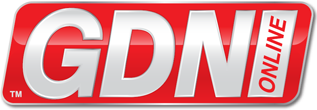US consumer spending unexpectedly fell in May as the boost from the pre-emptive buying of goods like motor vehicles ahead of the Trump administration’s tariffs faded, while monthly inflation maintained a moderate pace of increase.
The Commerce Department’s report yesterday likely will have no impact on near-term monetary policy as Federal Reserve Chair Jerome Powell told legislators this week that the US central bank needed more time to gauge the impact of the import duties on prices before considering resuming interest rate cuts. Business surveys have suggested tariffs could start driving up prices this summer, a sentiment shared by Powell and most economists.
President Donald Trump’s sweeping tariffs, which have led businesses and households to front-run imports and goods purchases to avoid higher prices from duties, have muddled the economic picture. Economists warned it could take time for the tariff-related distortions to wash out of the data.
“The report is a wash for the Fed and won’t alter its wait-and-see stance,” said Sal Guatieri, a senior economist at BMO Capital Markets. “The pullback in spending in May partly reflects payback from earlier tariff front-running, while the slightly warmer core price increase doesn’t settle the debate about how much tariffs will impact inflation.”
Consumer spending, which accounts for more than two-thirds of economic activity, dropped 0.1pc last month after an unrevised 0.2pc gain in April, the Commerce Department’s Bureau of Economic Analysis said. That was the second decline in consumer spending this year. Economists polled by Reuters had forecast consumer spending would edge up 0.1pc.
Goods spending dropped 0.8pc amid a 1.8pc decline in outlays of long-lasting manufactured goods, mostly motor vehicles. Spending on non-durable goods like gasoline and food also fell.
Consumer spending on services ticked up 0.1pc. Services outlays were restrained by decreases in spending on hotel and motel accommodation as well as at restaurants and bars. There were also decreases in spending on financial services and insurance and transportation services.
But households spent more on housing and utilities as well as healthcare.
Consumer spending nearly braked last quarter after being propelled by households pulling forward goods purchases. Households also spent less on services last quarter, helping to restrain growth in consumer spending to only a 0.5pc annualised pace, the slowest rate since the second quarter of 2020. A record goods trade deficit in the first quarter, thanks to a deluge of imports, accounted for much of the 0.5pc rate of decline in gross domestic product during that period.
Economists argue that price increases have remained moderate because businesses are still selling inventory accumulated before the tariffs went into effect. They expect inflation will start picking up, beginning with consumer price data for June.
The Personal Consumption Expenditures (PCE) Price Index gained 0.1pc in May, matching the rise in April, the BEA said. In the 12 months through May, PCE inflation increased 2.3pc after climbing 2.2pc in April.
Stripping out the volatile food and energy components, the PCE Price Index increased 0.2pc last month. That followed a 0.1pc rise in the so-called core PCE inflation in April. In the 12 months through May, core inflation advanced 2.7pc after rising 2.6pc in April.


&uuid=(email))